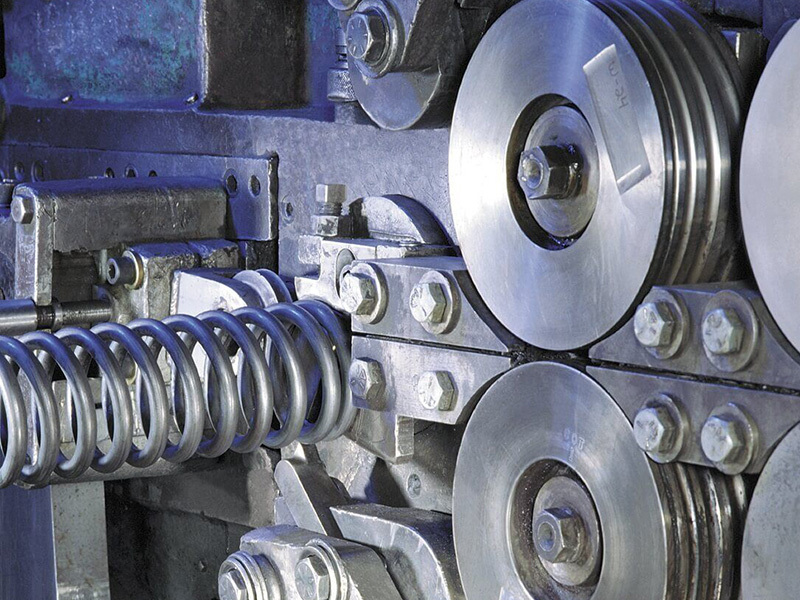Introduction to the basic working principle of a spring machine
2019-08-06

Introduction to the basic working principle of a spring machine
The basic working principle of a spring machine can be mainly divided into these processes: straightening mechanism, feeding mechanism, diameter changing mechanism, pitch control mechanism, and cutting mechanism, etc., five parts.
1. Straightening mechanism: The straightening mechanism is located between the material rack and the feeding roller. It consists of two sets of straightening rollers. The purpose of the straightening system is to eliminate the original bending deformation of the wire, so that it can enter the forming machine straightly to improve the accuracy of the spring.
2. Feeding mechanism: The feeding mechanism is a device that uses one or two pairs of feeding wheels to press the wire and uses the rotation of the feeding wheel to drive the wire to move forward linearly. It uses a sector incomplete gear to drive the gear on the feeding wheel shaft. The speeds of the upper and lower rollers are the same, but the rotation directions are opposite. When the feeding wheel rotates one revolution, the feeding length is the circumference of the feeding wheel. The unfolding length of the spring can be determined by the number of revolutions of the feeding wheel. The number of teeth of the sector incomplete gear controls the number of revolutions of the feeding wheel (refer to the coefficient table for details).
3. Diameter changing mechanism: The diameter changing mechanism refers to the control mechanism of the outer diameter of the spring when winding the spring. It consists of two top rods and a diameter changing cam that drives the top rods. When producing cylindrical springs, the wire path of the spring remains unchanged. Adjust the two top rods to the corresponding positions to meet the outer diameter of the spring, and then fix the positions of the two top rods. When producing variable diameter springs, such as convex and truncated cone springs, loosen the two bolts at the front and rear of the upper top rod, allowing the top rod to reciprocate in the knife holder to change the outer diameter of the spring. The top rod is driven by the diameter changing cam to produce various variable diameter springs.
4. Pitch change mechanism: The pitch change mechanism is a mechanism that controls the pitch of the spring. This machine has two mechanisms:
(1) It consists of a pitch knife and a pitch cam. The pitch cam controls the effective number of turns of the spring, and the bolt under the pitch knife adjusts the height of the spring;
(2) It uses a cam-driven connecting rod to push the pitch knife out of the machine, which is better for larger pitch springs.
5. Cutting mechanism: The cutting mechanism is the last processing step before the spring falls after winding and forming. The cutting is completed by the knife and the core.
Next page:

Tel:
E-Mail:
ADD:
Fujisource Industrial Park, Building D, Sandong Town, Huizhou City, Guangdong Province
Power by:www.300.cn | SEO | Privacy Policy







